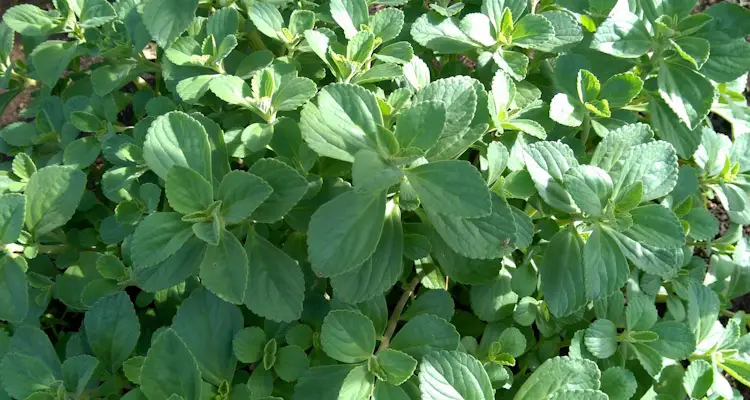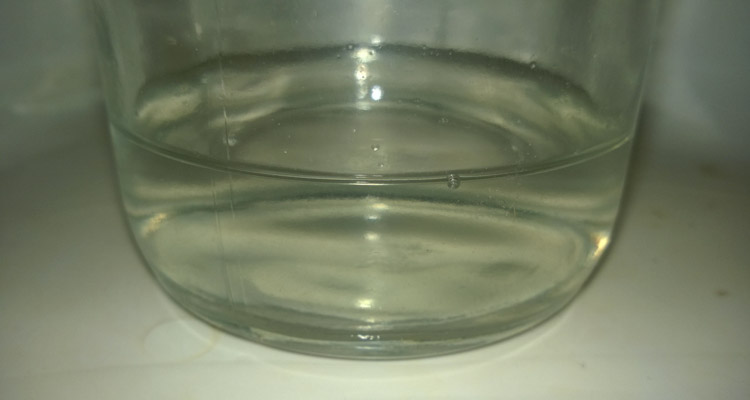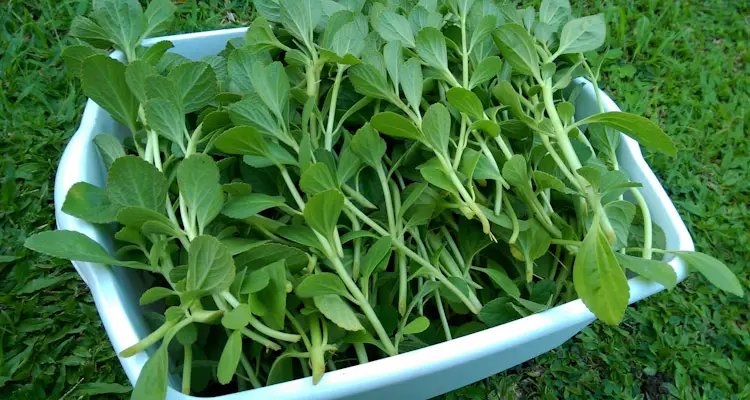My panadol plant has grown into a beautiful bush, and now it’s time to prune it. Instead of throwing it all away, I wanted to find out how to use panadol plants. So, I looked into it.
Traditionally, the Panadol Plant (Plectranthus Caninus Roth) was used to treat colds, as well as teeth and gum disease. It is also used sparingly in seasoning mixes. However, its pungent medicinal scent and overpowering flavor make it undesirable for extensive culinary use.

Many people overlook this plant altogether, but you can do so much with it if used correctly. In this article, we’ll take a look at some simple ways to use panadol plants.
Let’s get started.
3 Simple Ways To Use The Panadol Plant
A little panadol plant goes a long way. While helpful, its pungent medicinal scent can easily make you feel upset.
As a result, you should use it sparingly whenever you do. That aside, let’s take a look at three simple ways to use the Panadol plant.
1. Green Seasoning
Panadol plant is a member of the mint family. It has a strong scent similar to Oregano and a slightly bitter taste. These qualities make it unsuitable for most dishes. However, it serves as a perfect accent in green seasoning.
Green Seasoning is easy to make. Add some Garlic, Chives, Thyme, Seasoning Peppers, Big Thyme, Sage, Basil, Parsley, Culantro, Salt, Vinegar, and a leaf or two of panadol plant.
Mix all ingredients using either a blender or food processor.
The result is an all-purpose seasoning that you can use for fish, chicken, or other meats.
2. Panadol Bush Tea
The Panadol plant was used mainly for its perceived medicinal benefits. A survey confirmed that the most common way to use the plant was to brew it into a tea.
To make panadol bush tea, you can add some leaves to boiling water. Leave it for 15 to 30 minutes. You can drink it cool or reheat it when ready.
Many people claim that panadol bush tea is effective in the treatment of colds, as well as teeth and gum diseases.
3. Panadol Plant Essential Oil
The extraction of essential oils creates additional opportunities for uses outside the norm.
A recent study supports the traditional claims of the medicinal properties of the Panadol plant.
In the study, researchers extracted the essential oils and tested their compounds.
The oils contain antioxidants, which exhibit antimicrobial and anti-inflammatory qualities.
You need a lot of plant matter to produce essential oils. Panadol plant is perfect for this since it grows abundantly.

However, due to its succulent nature, the Panadol plant can be a bit difficult to process. It is much easier to extract the oil in the form of a hydrosol.
Does Panadol Plant Contain Paracetamol?
While Panadol Plant shares many of the benefits of its namesake, there has not been any evidence that it contains Paracetamol, the active ingredient in Panadol medication.
So, what accounts for the panadol-like effects?
Panadol bush contains some compounds with pain-relieving and anti-inflammatory properties.
According to a research article from 2011, panadol bush contains Camphor and Alpha Thujene ( a-thujene).
Alpha Thujene has many benefits including,
- Reduces inflammation
- Minor Pain Relief
- Protect against germs and Bacteria
Camphor’s benefits include,
- Antibacterial
- Antifungal
- Anti-Inflammatory
The properties of these two compounds partially explain the traditional claim and comparison to Panadol.
Where Did Panadol Plants Come From?
Panadol Plant (Plectranthus Caninus Roth) was first identified and collected in India. However, it has since spread throughout the world.
I saw it listed as a native plant in some parts of Africa, but I could not find information about it there. What I found was another plant that looks similar but with slightly different properties.
I got my cuttings from a friend in Trinidad, where there is an extensive Indian population. You can even find Panadol bush growing wildly in some parts of the island.
How To Grow Panadol Plant?
Panadol plant is one of the easiest plants to grow. You can cut a piece, stick it into the ground, and it will start to grow within a week or two.
While it is easy to grow, there are a few things to keep in mind.
- Keep the cuttings moist until they start to grow.
- Make sure that the soil is well-drained. While it can tolerate waterlogged soil, it will not do so indefinitely.
- Water during dry periods. The leaves will become a bit brown, but don’t worry. It will return green once it gets enough water.
- It spreads rapidly. The stems grow roots whenever they come in contact with the soil.
- Prune often to keep healthy. Be careful when disposing of the cuttings. They will grow as long as they get into contact with moist soil.
- Ensure you have enough space for the plant to spread because it will take over the entire area if left unattended.
The Panadol Plant is an attractive addition to the garden. However, if space is limited, you should consider growing it in a large pot.

Final Thoughts
I did not know anything about the panadol plant before receiving a cutting a few years ago.
However, I was pleased to find out about the benefits and possible uses.
While I may not be able to make use of all the plant produces, I believe that it is a valuable plant to have at any home.
Related Questions
What Is The Difference Between Panadol And Paracetamol Plants?
Panadol Plant and Paracetamol Plant are alternative names given to the same plant, whose scientific name is Plectranthus Caninus Roth. It has some medicinal properties. However, there is no evidence that it contains paracetamol, the active ingredient in Panadol.
Is the Panadol Plant Considered Succulent?
The Panadol Plant is a semi-succulent member of the mint family. It is usually grown from cuttings, which are easy to take root. Its cuttings are easy to wither after separating from the parent plant, especially if exposed to sunlight.
References
JSTOR. Plectranthus Caninus Roth. JSTOR.org. Accessed July 2021
Science Direct. Chemical Composition…Plectranthus caninus Roth. Sciencedirect.com. Accessed July 2021
Science Direct. Alpha Thujene. Sciencedirect.com. Accessed July 2021
